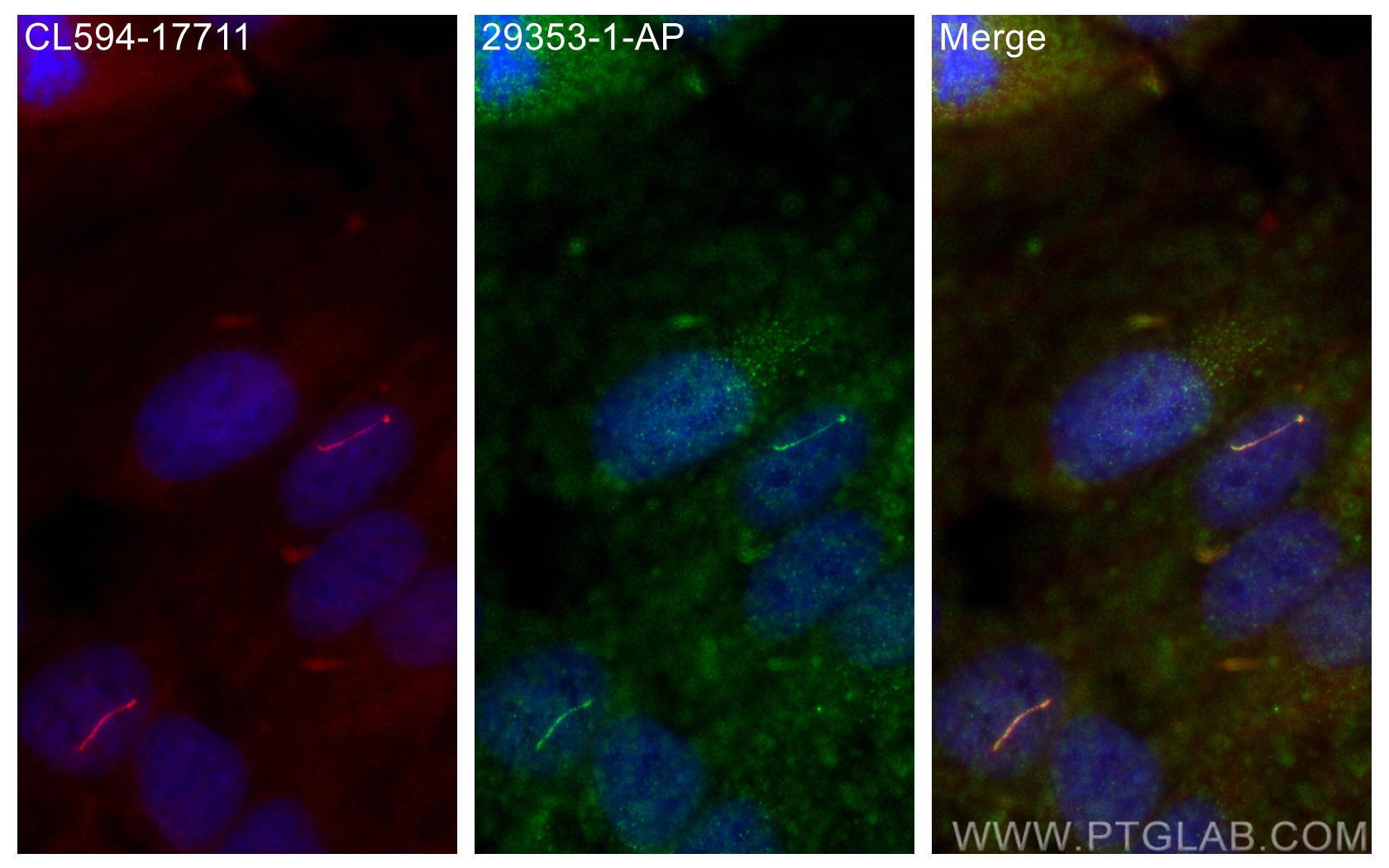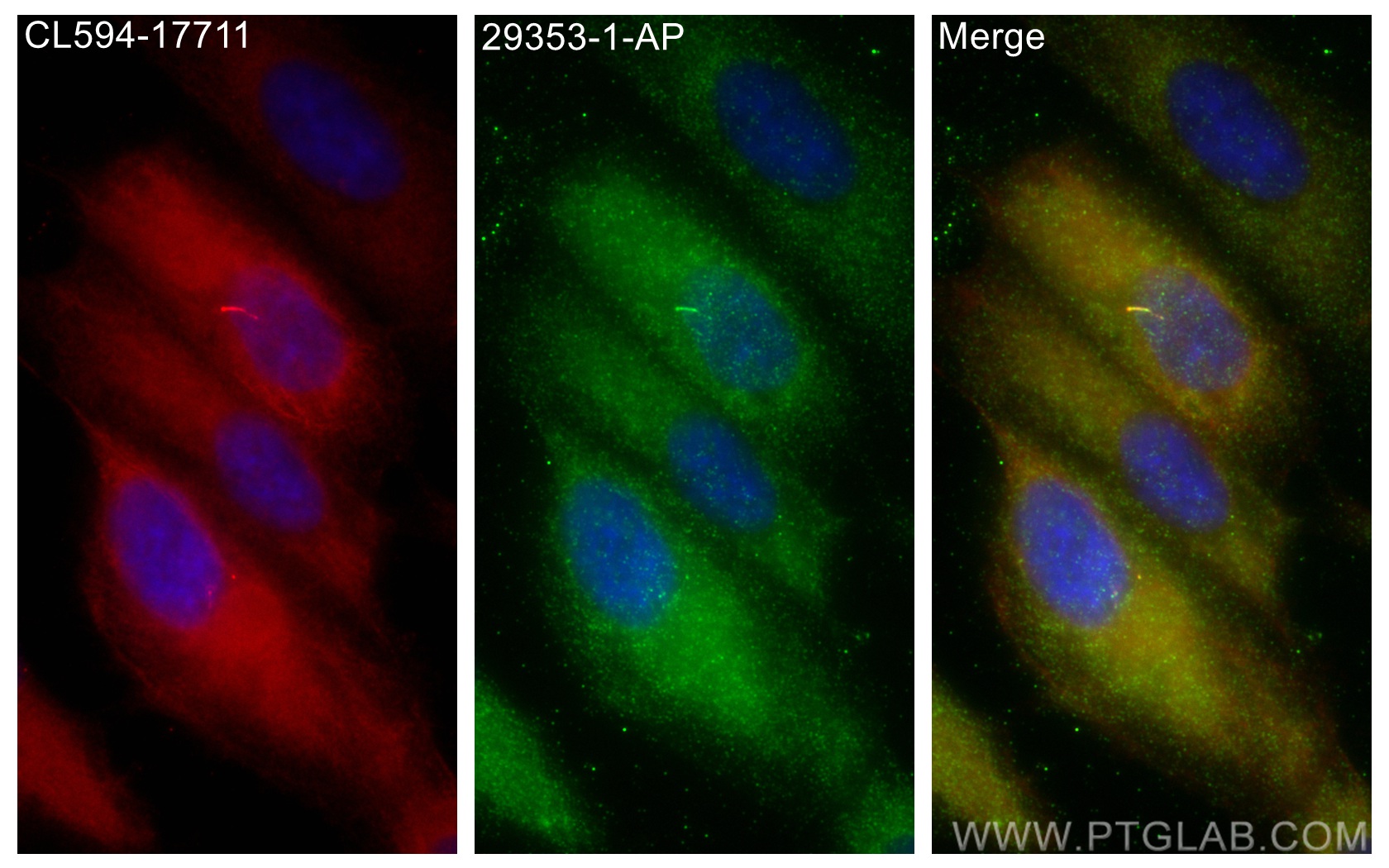验证数据展示
经过测试的应用
| Positive WB detected in | HEK-293 cells, mouse testis tissue, rat testis tissue |
| Positive IF/ICC detected in | ARPE-19 cells |
推荐稀释比
| 应用 | 推荐稀释比 |
|---|---|
| Western Blot (WB) | WB : 1:500-1:3000 |
| Immunofluorescence (IF)/ICC | IF/ICC : 1:50-1:500 |
| It is recommended that this reagent should be titrated in each testing system to obtain optimal results. | |
| Sample-dependent, Check data in validation data gallery. | |
产品信息
29353-1-AP targets INPP5E in WB, IF/ICC, ELISA applications and shows reactivity with Human, mouse, rat samples.
| 经测试应用 | WB, IF/ICC, ELISA Application Description |
| 经测试反应性 | Human, mouse, rat |
| 免疫原 | INPP5E fusion protein Ag30305 种属同源性预测 |
| 宿主/亚型 | Rabbit / IgG |
| 抗体类别 | Polyclonal |
| 产品类型 | Antibody |
| 全称 | inositol polyphosphate-5-phosphatase, 72 kDa |
| 别名 | INPP5E, PPI5PIV |
| 计算分子量 | 644 aa, 70 kDa |
| 观测分子量 | 70 kDa |
| GenBank蛋白编号 | BC028032 |
| 基因名称 | INPP5E |
| Gene ID (NCBI) | 56623 |
| RRID | AB_3086123 |
| 偶联类型 | Unconjugated |
| 形式 | Liquid |
| 纯化方式 | Antigen affinity purification |
| UNIPROT ID | Q9NRR6 |
| 储存缓冲液 | PBS with 0.02% sodium azide and 50% glycerol , pH 7.3 |
| 储存条件 | Store at -20°C. Stable for one year after shipment. Aliquoting is unnecessary for -20oC storage. |
背景介绍
INPP5E(72 kDa inositol polyphosphate 5-phosphatase) converts phosphatidylinositol 3,4,5-trisphosphate (PtdIns 3,4,5-P3) to PtdIns-P2.In mouse, highest protein expression was in brain, heart, and testis, with lower expression in thymus and lung, and very little expression in kidney, spleen, and liver(PMID:10764818). Defects in INPP5E are the cause of Joubert syndrome type 1 (JBTS1) and mental retardation-truncal obesity-retinal dystrophy-micropenis (MORMS)(PMID:19668215). It has 2 isoforms with the molecular mass of 66 kDa and 70 kDa.
实验方案
| Product Specific Protocols | |
|---|---|
| WB protocol for INPP5E antibody 29353-1-AP | Download protocol |
| IF protocol for INPP5E antibody 29353-1-AP | Download protocol |
| Standard Protocols | |
|---|---|
| Click here to view our Standard Protocols |


